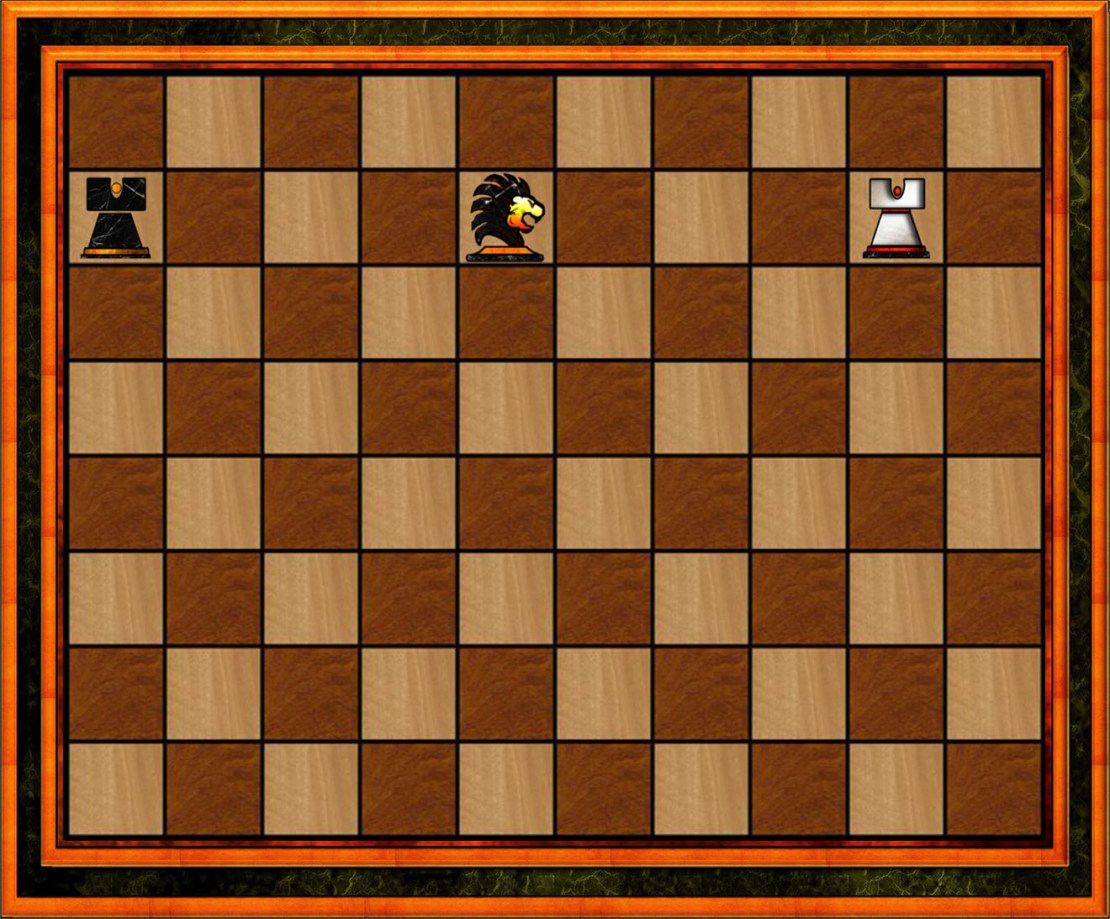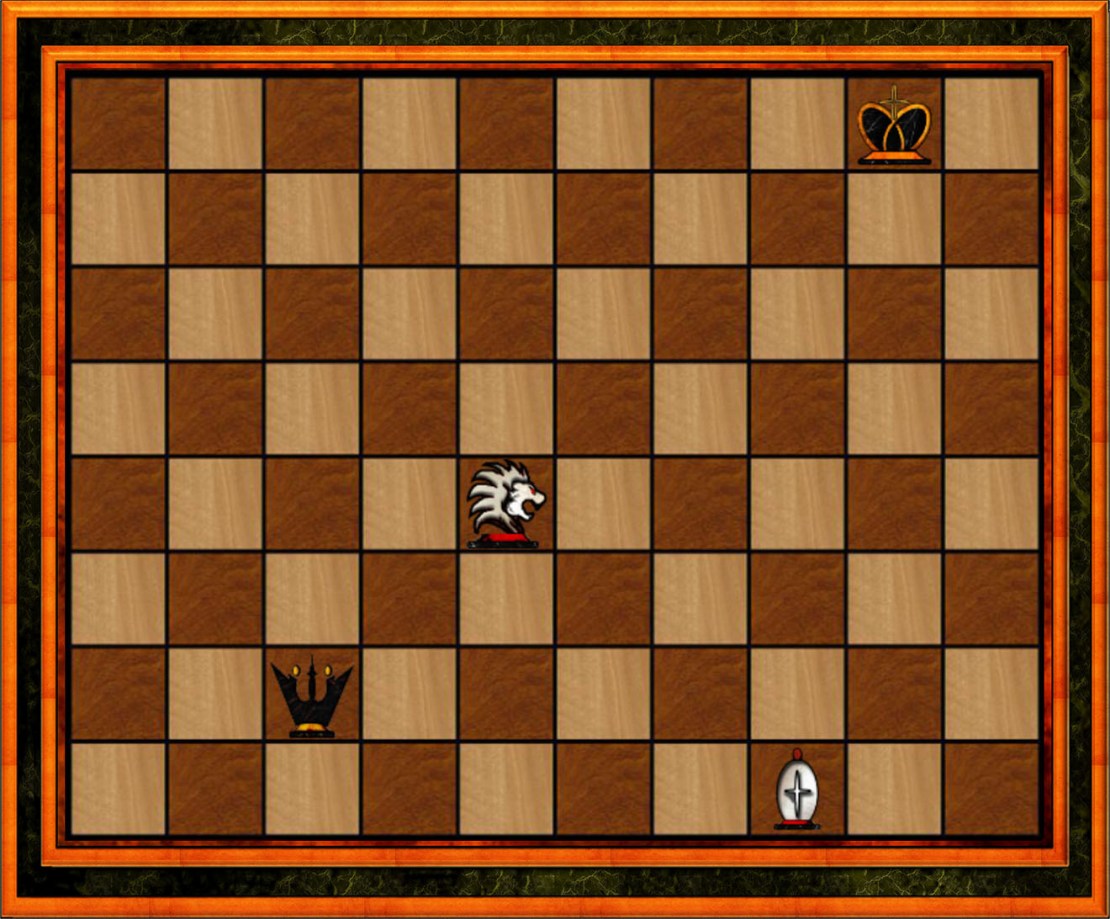
Those already familiar with the tactical concepts of traditional chess will be extremely impressed with “Tensor-Enhanced” tactics such as the Tensor Fork, Tensor Pin, Tensor Skewer, Tensor Discovered Attack, and Tensor Block.


Tensor Chess Fork
A Tensor Fork
is a move that uses one piece to attack two or more of the opponent’s pieces simultaneously, with the aim to achieve material advantage, since the opponent can counter only one of the threats.
In Tensor chess, a bishop need not be on the same diagonal as the pieces it forks. It can be merely aligned with a beast piece that is on the same diagonal as the pieces that are attacked. Similarly a rook need not be on the same rank or file as the pieces it attacks. This expands the opportunities for forks and often protects the attacking bishop or rook. The queen can fork like either a bishop or a rook.
Tensor Pin Manuever
A Tensor Pin
is a technique that inhibits one of an opponent’s pieces from moving because moving the piece would expose a more valuable piece behind it. If the pinned piece cannot move because it would produce a check, the pin is called an ‘absolute pin’. In traditional chess bishops and queens can pin an opposing piece along a diagonal. Rooks and queens can pin a piece along a rank (row) or file (column). By ricocheting off a beast, a bishop or queen in Tensor Chess can also pin an opposing piece on a different diagonal. Similarly, a rook or queen can pin an opposing piece on a different rank or file.


Tensor Chess Skewer
A Tensor Skewer
In a traditional skewer, a bishop, rook, or queen attacks along a line on which there are two opposing pieces, a more valuable piece in front of a less valuable piece. After the more valuable piece moves to avoid capture, the lesser piece can be captured. With a Tensor skewer, the attacking bishop, rook, or queen can ricochet to execute a skewer.
Tensor Discovered Attack
A Tensor Discovered Attack
is a manuever in which a piece moves away to allow another piece (bishop, rook, or queen) of the same color to attack an enemy piece. The piece that moves away initially blocked the line of attack. If the attacked piece is the enemy king, the maneuver is called a discovered check. The piece that is moved to cause the discovered attack can often pose a powerful additional threat. In Tensor Chess, a piece may move to allow a discovered attack by a ricochet.


Tensor Beast Block
A Tensor Beast Block
is a manuever in which a player can sometimes interpose a piece between one of his or her pieces under attack and an enemy bishop, rook or queen. It can move a piece between the attacked piece and the enemy piece. However, in traditional chess, that piece would itself be subject to attack. But if the interposing piece is a Tensor Beast, it is not subject to attack by the opposing piece. A beast can also be used to protect another piece of the same color that attacks an opposing piece but would otherwise be subject to attack itself.
Tensor Beast Pass-through and Block
A Tensor Pass-through and Block
In Tensor Chess, a beast acts as a shield for its own pieces and blocks opposing pieces, while allowing a bishop, rook or queen to pass through a beast of its own color. Here, a white rook would be blocked from attacking the black rook but the black rook can pass throgh the black beast to attack the white rook.










